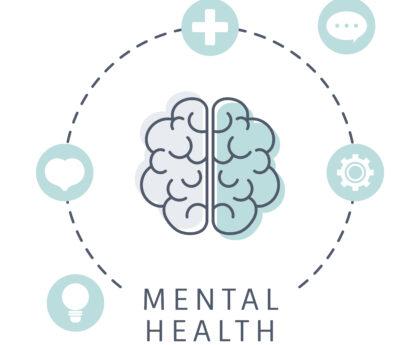Introduction:
In today’s fast-paced and demanding world, finding a balance between productivity and well-being can be a challenge. Mindfulness, a practice rooted in ancient wisdom, offers a solution. This comprehensive guide explores the concept of mindfulness and its profound impact on productivity. We delve into the science behind mindfulness, its benefits for mental health, techniques for incorporating mindfulness into daily routines, and strategies for enhancing productivity through mindfulness practices.
Table of Contents:
- The Need for Balance in a Hectic World
- Understanding Mindfulness
- Definition and Origins
- The Science Behind Mindfulness
- Benefits of Mindfulness for Mental Health
- Stress Reduction and Resilience
- Improved Focus and Attention
- Emotional Regulation and Well-being
- Mindfulness Techniques for Daily Practice
- Mindful Breathing and Body Scan
- Mindful Eating and Walking
- Loving-Kindness Meditation
- Mindful Technology Use
- Incorporating Mindfulness into Work
- Mindful Time Management
- Mindful Communication
- Mindful Work Environment
- Mindful Work Breaks
- Enhancing Productivity through Mindfulness
- Increased Focus and Concentration
- Enhanced Creativity and Innovation
- Better Decision-Making and Problem-Solving
- Improved Work-Life Balance
- Overcoming Challenges in Practicing Mindfulness
- Dealing with Distractions
- Cultivating Consistency
- Managing Workload and Priorities
- Building a Supportive Mindful Culture
- Mindfulness and Leadership
- Mindful Leadership Qualities
- Leading with Empathy and Compassion
- Creating Mindful Organizations
- The Future of Mindfulness in the Workplace
- Mindfulness-Based Programs and Training
- Technology and Mindfulness
- Mindfulness in Remote Work Settings
- Conclusion
The Need for Balance in a Hectic World:
In today’s fast-paced and hyper-connected world, the pressure to be constantly productive can take a toll on our mental and physical well-being. Finding a balance between work and personal life becomes crucial for maintaining overall health and happiness. This chapter explores the challenges of maintaining balance in a hectic world and the detrimental effects of chronic stress and overwork.
Understanding Mindfulness:
To navigate the demands of a busy world, it is essential to understand the concept of mindfulness. This chapter delves into the definition and origins of mindfulness, tracing its roots in ancient contemplative practices. It also explores the scientific research behind mindfulness, highlighting the physiological and psychological effects it has on the brain and overall well-being.
Benefits of Mindfulness for Mental Health:
Mindfulness has been extensively studied for its numerous benefits for mental health. This chapter explores the impact of mindfulness on stress reduction, resilience, improved focus and attention, emotional regulation, and overall well-being. Scientific evidence and real-life examples demonstrate the positive effects of mindfulness in reducing anxiety, depression, and burnout.
Mindfulness Techniques for Daily Practice:
Incorporating mindfulness into daily routines is key to experiencing its benefits. This chapter introduces various mindfulness techniques that can be easily integrated into everyday life. From mindful breathing and body scan to mindful eating and walking, readers will learn practical techniques for cultivating present-moment awareness and reducing stress.
Incorporating Mindfulness into Work:
Bringing mindfulness into the workplace can lead to a more productive and harmonious work environment. This chapter provides strategies for incorporating mindfulness into different aspects of work, including time management, communication, work environment, and work breaks. Practical tips and real-world examples guide readers on how to infuse mindfulness into their work routines.
Enhancing Productivity through Mindfulness:
Contrary to popular belief, mindfulness and productivity go hand in hand. This chapter explores how mindfulness practices can enhance productivity in the workplace. It highlights the benefits of increased focus and concentration, enhanced creativity and innovation, improved decision-making and problem-solving, and better work-life balance achieved through mindfulness.
Overcoming Challenges in Practicing Mindfulness:
While mindfulness offers many benefits, it also presents challenges in its practice. This chapter addresses common challenges such as dealing with distractions, cultivating consistency in practice, managing workload and priorities, and building a supportive mindful culture. Practical strategies and insights help readers overcome these challenges and maintain a consistent mindfulness practice.
Mindfulness and Leadership:
Leadership qualities can be significantly enhanced through mindfulness. This chapter explores the intersection of mindfulness and leadership, discussing the qualities of mindful leaders, the importance of leading with empathy and compassion, and creating mindful organizations that foster employee well-being and productivity.
The Future of Mindfulness in the Workplace:
As mindfulness continues to gain popularity, its future in the workplace holds great promise. This chapter explores emerging trends and advancements in mindfulness-based programs and training, the role of technology in supporting mindfulness practices, and the challenges and opportunities of incorporating mindfulness in remote work settings.
Conclusion:
In a hectic and demanding world, mindfulness offers a powerful solution for finding balance and enhancing productivity. By cultivating present-moment awareness and practicing mindfulness techniques, individuals can experience numerous benefits for their mental health, well-being, and work performance. As mindfulness becomes more integrated into the workplace, it has the potential to transform organizational cultures and create a more harmonious and productive work environment.





